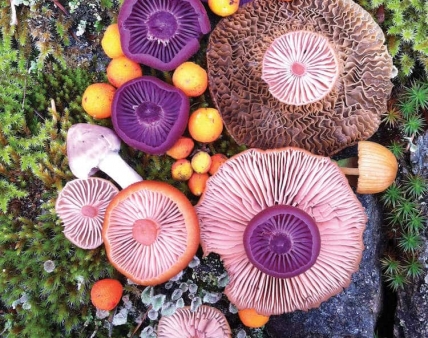The Magic Of Mushrooms
Wellness
Wellness

When people hear the word mushroom it can be easy for the mind to drift toward ideas of psychedelic experiences and grateful dead inspired visions. Yet the non-psychedelic, edible varieties of mushrooms can be equally as exciting due to their amazing health benefits.
Interestingly mushrooms have incredibly high amounts of ergothioneine and glutathione, potent antioxidants that aid in anti-aging and hold properties that can potentially fend off cancer. The wild Porcini mushrooms have been measured to hold the highest levels of antioxidants.
The actual number of mushroom types is difficult to pin down yet researchers estimate the number to be well over 10,000 documented and guesses that this is only a fraction of the actual number of varieties growing on earth. Mycologists organize mushroom species into four categories each describing how the organism feeds itself. The categories include saprotrophic, mycorrhizal, parasitic and endophytic.
.jpg)
Saprotrophic mushrooms are vital to the food chain in that they use decaying wood, plants and animals for food by releasing enzymes that break down dead tissue into smaller molecules they can absorb.
Many medicinal and gourmet species of mushrooms fall into this category including the more common Shitake and Reishi.
The mycella of mycorrhizal mushrooms unite with the roots of plants which add moisture, phosphorous and other nutrients to the host plant allowing them to thrive in growth versus their non-mycorrhizal counterparts. Farmers often inoculate their crops with these types of fungi to achieve optimal growth. Examples of these tree friendly species are Porcini and the highly decadent Truffle mushroom.
Just as their mycorrhizal cousins, parasitic types of mushrooms also take plant hosts. Yet with parasitic mushrooms they wind up infecting the host and ultimately killing it.
There is a lot still unknown about the endophytic mushroom species, which invades host tissue, yet keeps it healthy and adds benefits in regard to nutrient absorption and resistance to pathogens.
According to professor emeritus of food science at Penn State and director of the Center for Plant and Mushroom Foods for Health, Robert Beelman:
“Countries that have more ergothioneine in their diets—like France and Italy—also have lower incidences of neurodegenerative diseases, while people in countries like the United States, which has low amounts of ergothioneine in the diet, have a higher probability of diseases like Parkinson’s and Alzheimer’s.”
.jpg)
Beelman goes on to state:
“The free radical theory of aging says when we oxidize our food to produce energy, there’s a number of free radicals that are produced as side products of that action, and many of them are quite toxic. The body has mechanisms to control most of them, but eventually enough accrue to cause damage, which has been associated with many of the diseases of aging, like cancer, coronary heart disease and Alzheimer’s.”
Mushrooms are becoming rather trendy in the wellness industry and can be found in many skincare lines and in powder supplement forms. Whether you consume them with your pasta or raw or even slather on your skin, mushrooms can definitely help your immune system and potentially make you feel more beautiful, inside and out.
